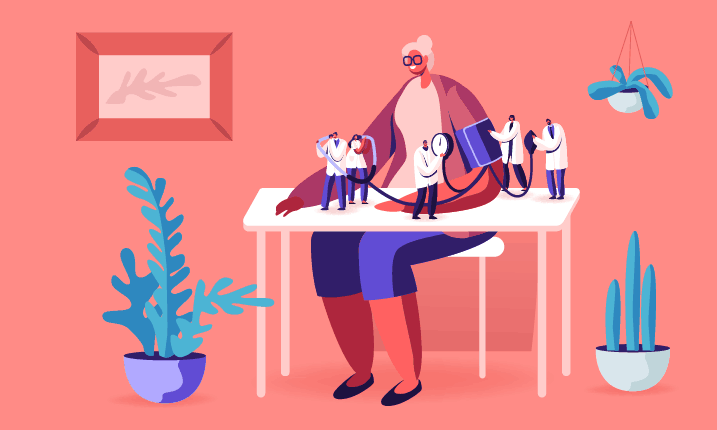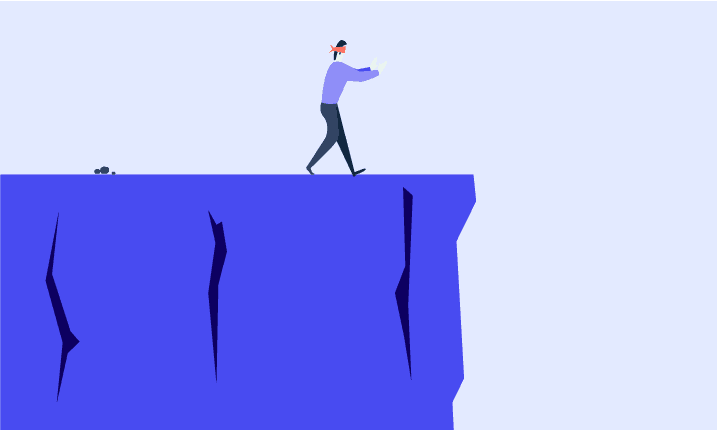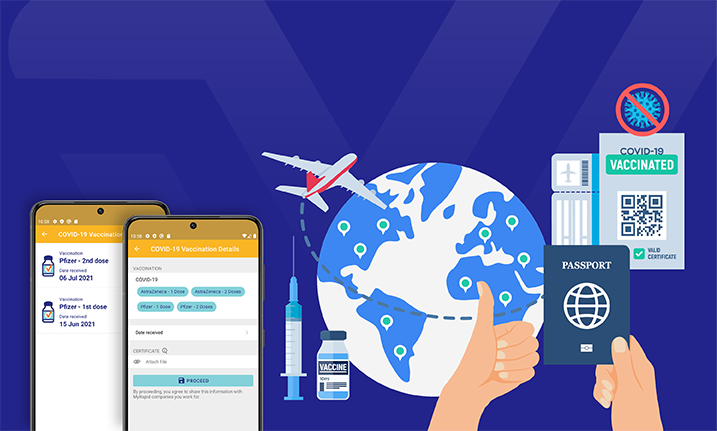

A 7-STEP guide to helping you and your workers cope with COVID-19 stress and anxiety
As the world takes more extreme measures to eradicate the coronavirus it’s critically important to recognise the emotional toll it’s taking on people everywhere — especially your workers. Social distancing, quarantine, and isolation drive us further apart, and the rapidly changing global economy is creating huge financial uncertainty. No wonder there is so much COVID-19 anxiety, worry, and fear out there.
And it’s hard for you too. Business owners, trying to keep everyone safe (as well as the doors open) — while managing your own stress levels. That’s why we’ve put together this 7-STEP guide to helping your workers (and you) cope with COVID-19 stress and anxiety.
1. Stay up-to-date with COVID-19 compliance — isolation, quarantine and social distancing
Stress and anxiety can be better managed when we are in command of the facts, so please stay up-to-date with COVID-19 compliance measures — remembering they are changing on a daily basis. At the time of writing this article businesses must:
- Implement social distancing.
- Use appropriate PPE (eg, gloves, eye protection, face masks).
- Maintain proper hygiene and infection controls.
- Ensure workers and site visitors observe isolation and quarantine periods before attending the workplace.
- Not engage in restricted activities
Certain business types are now restricted (eg, aged care centres, funeral homes) or not permitted to operate (eg, fitness centres, clubs, pubs, churches, cinemas), and compliance is mandatory.
Don’t rely on secondary sources like newspapers or social media posts for compliance information — fact check everything before making changes to your business practices. Reading fake news or unsubstantiated opinions just adds to your stress levels and creates unnecessary panic.
We suggest bookmarking the following pages which are published by the Australian Government and updated every day with the latest requirements:
- Safe Work Australia’s dedicated page: Coronavirus (COVID-19): Advice for employers
- Department of Health’s (federal government) Coronavirus (COVID-19) resources
Workers respond better to strong leaders who communicate openly about changes to the business, plus respond quickly to government updates and health advisories. Strong leadership will reduce their stress as much as yours.

2. Understand (and recognise) the impacts of stress, anxiety, and fear
It’s normal for people to experience extreme distress when they hear about an infectious disease outbreak, even when there is little risk of getting sick. Learn to recognise (and respond) to the signs of stress in your workers (as well as yourself) — these could be:
- A change in energy and activity levels.
- Increasing the use of alcohol, tobacco, or drugs.
- Irritability, anger, arguing and outbursts.
- Trouble sleeping and relaxing.
- Crying or worrying excessively about the health of family and loved ones.
- Withdrawal from co-workers and not wanting to communicate.
- Blaming other people.
- Unwilling to give or receive help.
- Trouble listening and communicating
If any of your workers (or you) are consistently displaying signs of stress (we’re not talking about an isolated outburst) for several days or weeks, be sure to get/offer help from counselling and mental health support services.
3. Support newly remote workers
Social distancing, isolation and quarantine controls are forcing many employees to work from home, and in many cases, they have never done this before. Support your workers as they transition from the energy of a busy shop or office to an isolated workspace in their home.
They’ll need time to adjust, so immediately expecting the same level of productivity and output will add to their stress, as well as your own. Give your people time to set up their workstations and adjust to the daily distractions from family, friends, or housemates.
At the same time, they’ll need information about managing their:
- Work Environment — lighting, ventilation, comfort, equipment, general safety, storage of documents, furniture etc.
- Physical Activity — repetitive tasks, manual handling/lifting, posture.
- Communication — agreed communication methods, data security, document delivery.
- Work Practices — continuous computer use, breaks from keyboarding, stretching and moving around.
- Mental Health — managing distractions, separating work activities from home activities, getting fresh air, spending periods of time outdoors.
Even a seasoned freelancer or home-office professional struggles to manage family distractions, and people who live alone (single parents) may feel especially lonely and isolated.
4. Keep your workers updated with accurate information about stress management
Did you know that loneliness has the same impact on mortality as smoking 15 cigarettes a day (2018 Cigna U.S. Loneliness Index)? We, humans, are social creatures and are biologically wired for collaborative networks and social interaction. But loneliness isn’t the only emotion your workers will encounter.
Help your workers understand they are likely to be feeling:
- Anger — if they were exposed to coronavirus because of someone else’s negligence.
- Guilt — for compromising or infecting another person.
- Lonely — when into forced isolation or quarantine away from co-workers or business partners.
- Uncertainty — about how long the situation will last and when things will return to normal.
- Worried — about finances, job security or their own health and safety.
- Bored — doing the same thing and not being able to leave the house.
- Frustrated — at not being able to meet up with friends or just engage in normal day-to-day activities.
- Post-traumatic stress disorder (PTSD) — especially front-liners like doctors, nurses, midwives, aged carers, ambos, paramedics, police and other emergency responders.
Mental health management practices
We suggest sharing these recommended practices for stress management during an infectious disease outbreak. You might even include them in a RapidInduct training module for your workers and contractors — feel free to use this content in your Rapid module.
Keep things in perspective
By all means, stay up to date with what’s happening, but try to limit your exposure to news and the social media frenzy. Watching the news 24/7 will only increase your worry and will impact other members of your family — especially the kids.
When making decisions about the health of your family (and yourself) act on reliable information sourced from the World Health Organisation (WHS) or the Australian Government Department of Health.
Stay healthy
Keeping up your immune system and staying healthy is vitally important — both for stress management and disease resilience. Make sure you:
- Get enough rest and sleep — but don’t spend the whole day on the couch either.
- Don’t forget your physical activity.
- Drink plenty of water and eat fresh, unprocessed food.
- Don’t overdo it on caffeine, soft drink, sugar and alcohol.
- Eat healthy foods, and drink water.
PS: now is a great time to quit smoking or using tobacco.
Relax
Even if you are stretched out on the couch watching Netflix, you aren’t really relaxing if you mind is racing and your heartbeat is irregular. Breathing exercises, meditation, yoga, and tai chi are all world recognised stress busters — but doing a YouTube Zumba class can also help.
Remember your hobbies and take time away to walk in the garden, cook a delicious meal, or video call a friend. Talk about your feelings and ask for help if you need it.
Recognise your stress
Stress can manifest in so many areas of your life, recognise the warning signs (you know your body best) and don’t be afraid to ask for help if you aren’t coping:
- Body — are you getting headaches or diarrhoea, rapidly gaining weight, have no appetite, sweating or having chills, having muscle spasms or tremors?
- Behaviour — are you unable to stop eating, drinking too much alcohol, struggling to get out of bed, cranky and irritable all the time?
- Emotions — are you having heightened emotions (anger, sadness, fear), or numbed and feeling nothing at all?
- Mind — are you confused, indecisive, or having trouble remembering things and concentrating?
Talk to a professional about your mental health
If you are quarantined at home you may be able to schedule a doctor’s consultation by video conference (Skype, Facetime, WhatsApp). And don’t forget the amazing free services counselling providers that specialise in stress and crisis counselling like Lifeline, Mensline and Relationships Australia.
5. Develop online training modules to empower your workforce
If you are already using RapidInduct or other safety systems you could develop online training modules to empower your staff during the COVID-19 pandemic. Suggestions for modules include:
- Working from home — setting up work stations, work health and safety in the home office, managing distractions and interruptions, staying productive, balancing work and family.
- Stress management — recognising stress in self and others, staying healthy, counselling support mechanisms.
- COVID-19 Infection Controls — minimising exposure, understanding social distancing and self-isolation, what to do if COVID-19 infection is suspected.
6. Provide opportunities for social interaction
Technology in 2020 has so many applications for social interaction so there’s no need for your remote workers to feel left out. How about:
- Keeping workers informed by live streaming company announcements via YouTube or private Facebook Groups.
- Use social media and your company’s LinkedIn page to provide some more uplifting posts. In these times, people want to feel connected just as much as they want to be informed. If you are after some inspiration for some uplifting company HR posts follow Rapid on LinkedIn and get updates from our ‘Rapid Goes Remote Series’. Our favourite is Hugo the Puppy giving his best working from home handy tips.
- Scheduling daily/weekly video meetings via WhatsApp, Facetime, Skype, Microsoft Teams, Zoom
- Logging everyone into a live chat service.
- Having random social chats, fun video events, or even the virtual tearoom — where everyone takes their coffee break at 9.30 am over Skype.
The possibilities are endless and you are only limited by your imagination. A clever leader could emerge their business from the COVID-19 pandemic with a stronger, more engaged workforce.
7. Stay clear, decisive and authentic
Finally, stay strong and ready to respond. Your workers will appreciate knowing where they stand as employees and the actions you are taking to protect the future of the business. That said, we’ll leave you with a few words of wisdom from Ira Helsloot, of the Crisislab at Radboud University in The Netherlands …
“We are longing for that positive message, but we will not believe the positive messages if the leader is not transparent about the negative part.”
Need some help with COVID-19 response?
Need some help adapting your Rapid systems to the COVID-19 response? Get in touch and our team will help configure your management software for infection controls — or if you don’t know much about Rapid products and services, provide a free demonstration.
References
Cigna International. 2018. ‘2018 Cigna U.S. Loneliness Index’.
Substance Abuse and Mental Health Services Administration. 2014. ‘Coping with Stress During Infectious Disease Outbreaks | SAMHSA Publications and Digital Products’. Substance Abuse and Mental Health Services Administration.
Zara Greenbaum. 2020. ‘Psychologists’ Advice for Newly Remote Workers’. Https://Www.Apa.Org (blog). 20 March 2020.








